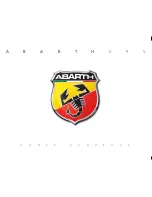
The Honda Accord Euro
17
SAFETY SYSTEMS
Advanced Compatibility Engineering (ACE) Body Structure disperses collision forces over a
larger frontal area
Standard driver and front passenger airbags, side airbags and full-length curtain airbags; ISOFIX
anchors and tethers
Safety
The new Accord Euro is equipped as standard with a comprehensive array of the latest active (accident
avoidance) and passive (crash safety performance) safety technologies to place it at the forefront of its
class. Features like Vehicle Stability Assist (VSA) with traction control, heightened handling agility, the
new Motion Adaptive EPS and ABS enhance the new model's accident avoidance capability. HID xenon
low-beam headlights on L and N models contribute to superior night-time visibility.
Should a collision prove unavoidable, the Advanced Compatibility Engineering (ACE) Body Structure of
the Accord Euro is designed to provide a protective cocoon for passengers. Inside, a network of eight
airbags work together with sophisticated restraint systems to minimise injury.
Advanced Compatibility Engineering (ACE) Body Structure
Progressively introduced throughout the Honda range, the Advanced Compatibility Engineering (ACE)
Body Structure is designed to deliver significantly enhanced occupant protection in a variety of real-world
crash conditions. These may include a frontal collision between vehicles of differing heights, weights and
frame construction.
The ACE Body Structure has been developed after extensive research by engineers, at the vehicle to
vehicle crash testing facility at Honda's Tochigi R&D base. A number of different vehicles were used
during the testing in a selection of realistic scenarios to ensure good real-world crash performance.
The ACE Body Structure uses the engine compartment to efficiently absorb and disperse collision energy
during a vehicle-to-vehicle collision. It features a new frame structure composed of a highly efficient
energy-absorbing main frame, a bulkhead (upper frame) which absorbs the upper part of the collision
energy, and a lower member that helps prevent misalignment of the frames of the vehicles involved. This
design disperses collision forces over a larger frontal area, which enhances energy absorption of the engine
compartment, reduces the chance of deformation of the passenger compartment and results in enhanced
occupant protection. At the same time, the structure reduces the chance of vertical or lateral misalignment
between the Accord Euro and another vehicle's safety structures.
Summary of Contents for Accord Euro
Page 1: ...The Honda Accord Euro 0 TECHNICAL PRODUCT BOOK ...
Page 2: ...The Honda Accord Euro 1 ...
Page 3: ...The Honda Accord Euro 2 ...
Page 4: ...The Honda Accord Euro 3 ...
Page 10: ...The Honda Accord Euro 9 ...
Page 11: ...The Honda Accord Euro 10 ...
Page 25: ...The Honda Accord Euro 24 ...
Page 37: ...The Honda Accord Euro 36 ...
Page 41: ...The Honda Accord Euro 40 ...
Page 43: ...The Honda Accord Euro 42 ...
Page 49: ...The Honda Accord Euro 48 ...
Page 51: ...The Honda Accord Euro 50 ...
Page 55: ...The Honda Accord Euro 54 Notes ...
















































